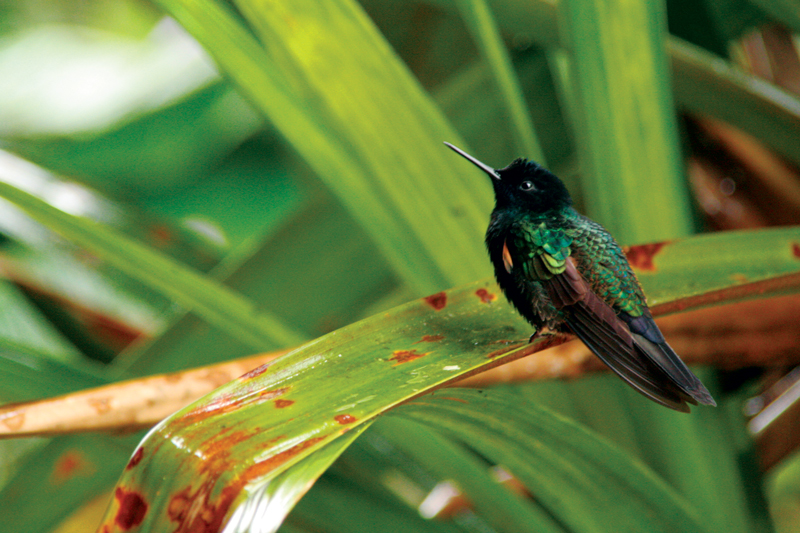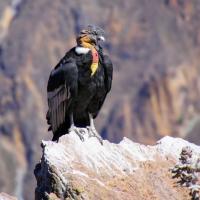The Holbrook Explorer

What Makes Ecuador So Appealing to Birders?
What Makes Ecuador So Appealing to Birders?
Considered one of 17 “megadiverse” countries in the world, Ecuador contains a variety of ecosystems at differing elevations, which helps explain why it's among the top 10 countries in the world for bird diversity. In fact, more than 1,600 species have been recorded here, including an astonishing 40% of the world's hummingbird species.
Within the country's borders lie four distinct regions—the Amazon, the Andes, the Pacific Coast, and the Cloud Forests—paradises of varying qualities, geography, landscapes, flora and fauna. Here’s a glimpse of what each of these worlds has to offer for birders.
 Photo by Pelin Karaca
Photo by Pelin Karaca
The Amazon
The Amazon Rainforest accounts for the largest portion of the country, and Yasuní National Park in particular has been recognized as one of the most biodiverse ecosystems on the planet! The park is home to over 596 species of birds, not to mention 150 species of amphibians, 121 species of reptiles, over 200 species of mammals, and 382 species of fish. Other national parks include Cayambe-Coca, Llanganates, and Sumaco Napo-Galeras.
Parrot clay licks are a particular draw, attracting thousands of birds at a time to eat the mineralized clay. Other targets include the Harpy Eagle, Hoatzin, Amazonian Motmot, and species of guans, chachalacas, tinamous, birds of prey, toucans, tanagers, and hummingbirds.
 Photo by Lisa Palmese-Graubard
Photo by Lisa Palmese-Graubard
The Andes
Ecuador is crossed by the Andean Cordillera (Mountain Range), also known as the Sierra and the Highlands. The mountains stretch nearly the entire length of the country from north to south and give way to beautiful landscapes, impressive volcanoes, rivers and lakes. Along the mountain range there are 55 volcanoes just within Ecuador, as well as the highest active volcano in the world, Cotopaxi Volcano.
These conditions are great for spotting high-elevation species like Ecuador's national bird, the iconic Andean Condor, as well as the Andean Cock-of-the-rock, Torrent Duck, caracaras, antpittas, and hummingbirds, including the Black-tailed Trainbearer, whose tail can be up to two feet long.
 Photo by Pelin Karaca
Photo by Pelin Karaca
The Cloud Forests
Cloud forests, technically called pre-montane/subtropical rainforests, span the Andean slopes from about 900 meters to about 2,500 meters. The ecosystem is characterized by consistent low-level cloud cover, where the rain doesn’t fall from the sky in the typical sense, but simply drips from the clouds directly onto the vegetation of the forest. Cloud forests are amass with shades of lush, mossy greens, and because of these qualities they are home to incredibly diverse flora and fauna, much of which has not yet been studied.
The Mindo Valley in Ecuador contains the Mindo Nambillo Cloud Forest Reserve, which provides refuge for over 350 species of birds, specifically hummingbirds, making it a prime location for birders to check off hard-to-find species. The cloud forests also provide sanctuary for butterflies and an array of other insects.
Cloud forests are home to the Toucan Barbet, Giant Antpitta, Scaled Fruiteater, and Club-Winged Manakin.
 Photo by Kulfman - Own work, CC BY-SA 3.0
Photo by Kulfman - Own work, CC BY-SA 3.0
The Pacific Coast
Lastly, Ecuador’s coastal region is as diverse as the rainforests and mountains and is home to Machalilla National Park (148,000 acres). The park encompasses tropical dry forest (unique to South America), coastal scrub, beaches, islands, islets and ocean. Today, the park is recognized as Ramsar Site, and is protected as a vital ecological wetland.
Isla de la Plata (Silver Island) is a biodiversity hotspot not to be missed. Isla de la Plata has been called the “poor man’s Galápagos” as it has much of the same iconic wildlife as the Galápagos, yet is less expensive to visit. In terms of wildlife and atmosphere the island is nothing if not rich. It is the only place on Earth where you can see Blue-footed, Red-footed and Masked Boobies all in the same place, along with Waved Albatross, frigatebirds, and much more.


